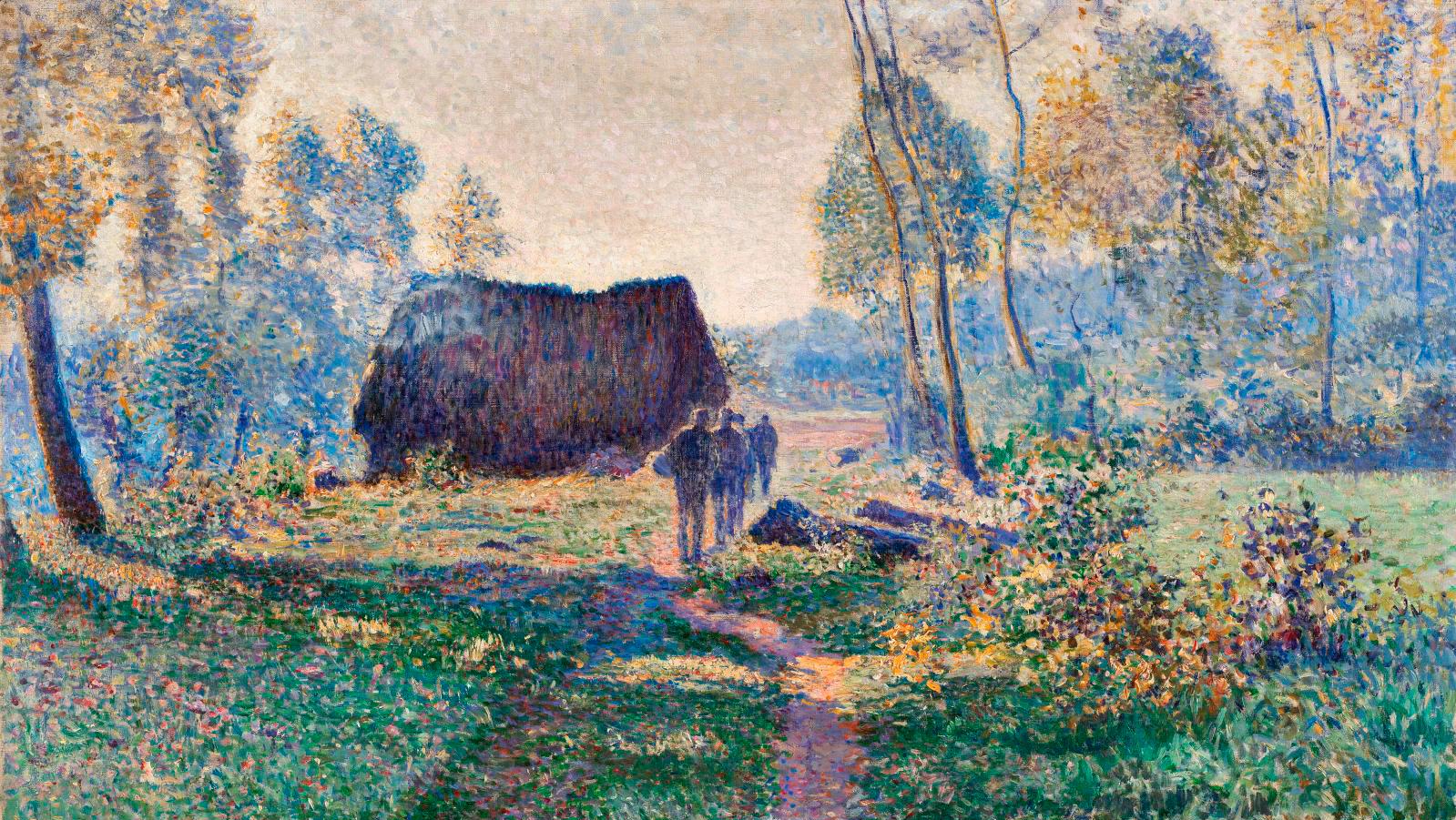Anna Boch is one of the few Belgian women artists, philanthropists and patrons of the arts to have achieved international fame on a par with their male counterparts. The Mu.ZEE in Ostend pays her a vibrant tribute.

Anna Boch, Chaumière en Flandre (Thatched Cottage in Flanders), 1891, oil on canvas, 75.5 x 107 cm/29.72 x 42.12 in (detail), Lucien Arkas Collection.
© Hadiye Cangokce
Anna Boch (1848-1936) purchased the only painting Vincent Van Gogh (1853-1890) sold during his lifetime: The Red Vineyard at Montmajour, for 400 francs at the 1890 Les XX (Les Vingt) exhibition in Brussels. She was also the only woman artist to be admitted to this Belgian avant-garde group founded by Octave Maus in 1883. Born into a generous, very wealthy family—her father founded the successful Boch porcelain factory in 1841—Boch started life with a thick address book and refined taste. The Mu.ZEE show draws on a host of archival documents attesting to her fierce desire for independence and to travel, her encounters, exchanges and boundless generosity towards new artists like Georges Seurat, Paul Signac and the nascent Fauvists Rick Wouters and Willem Paerels.
The multifaceted Boch was a passionate collector and a free-spirited painter in her own right. She regularly attended the exhibitions of the Salon de la libre esthétique, an artistic movement that succeeded the 1894 dissolution of the Group of XX and lasted until 1914. In 1887, Boch’s visual and aesthetic conceptualization of the world was turned upside-down when she saw A Sunday Afternoon on the Island of the Grande Jatte by Seurat, the leader, with Signac, of Neo-Impressionism. The painting had a transformative effect on her. Her brushstrokes became freer and looser, putting her in the ranks of the new artists: “I am not lumped together with the old ones but put at the very forefront,” she wrote to her brother Eugène Boch, also a painter. “I am so happy.” One critic at the time said, “Anna Boch has admirably deployed the tenets of Pointillism, taking its sparkling light and leaving the idiosyncrasies of the process behind.”
What About Her Work?
It took over two years of research to plan the dense, chronological, well-documented exhibition, which features Impressionist and Post-Impressionist masters, modern art and about 100 works by Boch. Virginie Devillez, the show’s co-curator with Stephan Huygebaert, says her collection contains “approximately 200 works, one-tenth of them by women”. It includes three paintings she purchased by Vincent Van Gogh as well as works by Paul Gauguin, Maurice Denis, Paul Signac, James Ensor, Victor Horta, Lucie Cousturier, Juliette Samuel-Blum and Isidore Verheyden, the mentor and painting teacher she eventually dismissed as "too bourgeois and academic".
Boch expressed her love for the landscapes of Brittany and the Mediterranean in both drawings and paintings. She enjoyed the sight of the surf crashing against cliffs, the southern light, the jagged outline of the rocks and the shadows they cast. Like her fellow French and Belgian artists, nature, travel and seascapes, especially the North Sea, the Belgian coast and Ostend, occupy a major place in her work. Her independent mind, deep erudition and keen eye for spotting new talent aside, might ask the question: what about her work? She knew how to paint, her technique was solid and her compositions were rigorous, but she remained trapped by the influence of those she admired to so much. Did she have a style or at least a pictorial method of her own? This groundbreaking show will try to answer that question.